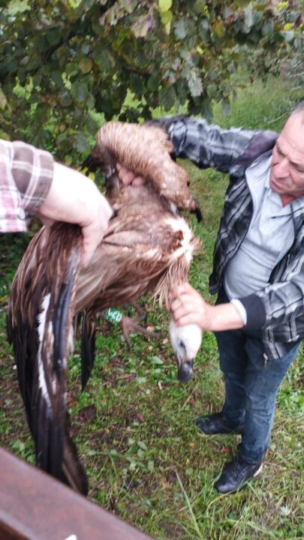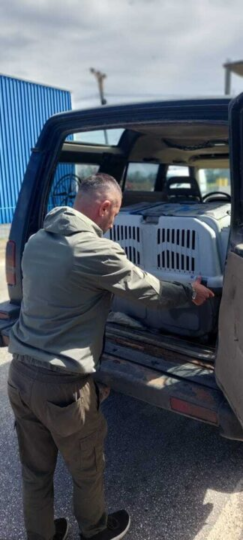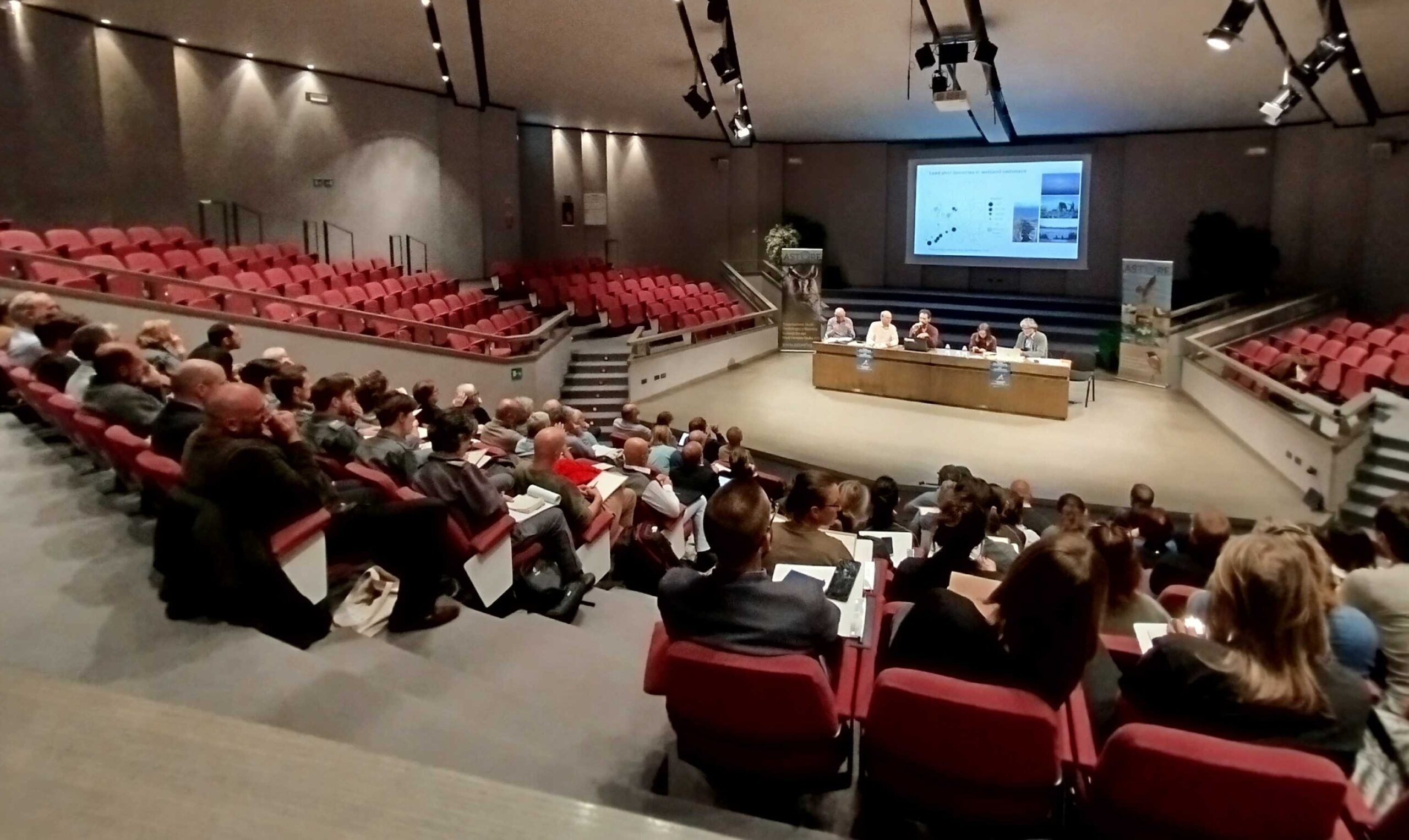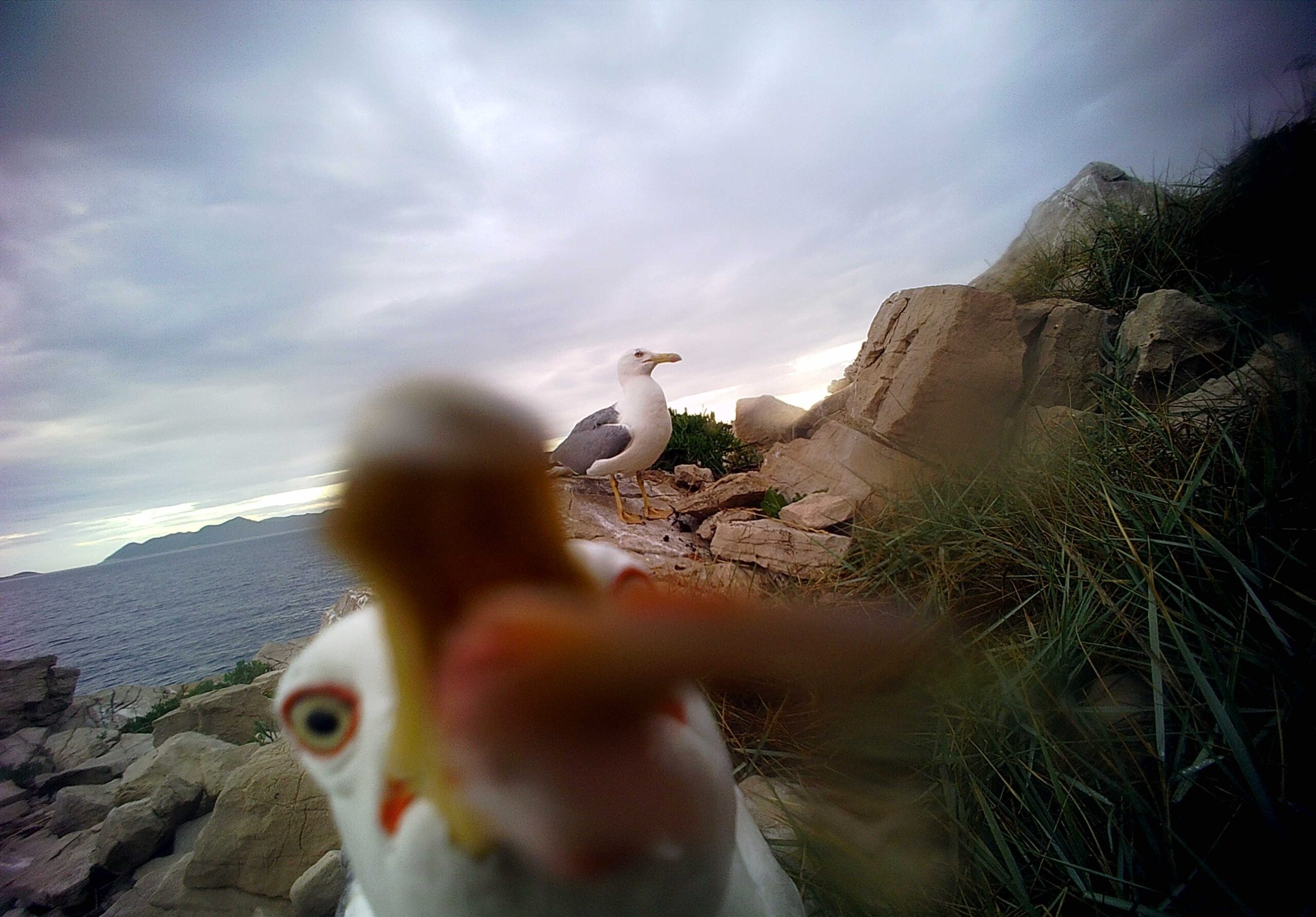The satellite signal showed that the vulture was staying in the same place for a
suspiciously long time, so we immediately contacted the Albanian Ornithological Society, which engaged its volunteers in the field. Only a number of vultures manage to master the skills necessary for independent survival in nature in the first five years.

Grif in the recovery center of the Divjaka-Karavasta National Park
Are you wondering where Grif is? The growth of every young Griffon vulture,
including Grif, is marked by numerous dangers that accompany the life of this bird species.
After he hatched in the nest on the Kvarner island of Plavnik cliffs in April, we
picked a name for him together, and wished him good luck and that he “holds a
tight grip” in life.
However, already in July, during his first takeoff from the nest, the
inexperienced flyer Grif fell into the sea, and his life was saved thanks to the
timely reaction of the staff of the Visitor Center and Recovery Center for Griffon
vultures “Beli” and volunteers of SUPpatrol, a volunteer campaign that has
been running since this summer in the area of the Kvarner Islands as a part of
the LIFE SUPport project. In August, Grif was released into the wild from the
rehabilitation facility in good condition after medical examinations, spreading
his wings again, and on the warm air currents headed first to the Alps, and then
to the south, all the way to Albania.
He came to Albania from the direction of Ulcinj, passed Laç and Tirana from the
east side, spent the evening east of the Tomorri National Park, headed to the
west south of Dimal and then spent more than a day on the agricultural lands
in the western part of Orizaj. That’s where he got into trouble again. It was
noticed that the satellite signal didn’t show any movement for suspiciously long
time, and that Grif stays in the same place.
On Friday evening, we contacted the Albanian Ornithological Society (AOS),
who immediately organized two of the local volunteers who live nearby to
check what happened to Grif. When they arrived at the scene, they had
something to see – Grif was stuck on top of the hazel tree!

The volunteers managed to climb the tree and pull Grif out into the open. Since
the vulture did not fly even after being pulled out, Albanian ornithologists
contacted the recovery center that operates within the Divjaka-Karavasta
National Park, and they took him over.
According to the first information, Grif is lively and quite strong, but he lacks
weight because he clearly has not yet mastered the skill of searching for food.
As a social species, Griffon vultures rely heavily on each other for this, and since
they were more numerous in the past it must have been easier. It was found
that Grif now weighs 4.7 kg, which is at least two kilos less than the normal
weight of a vulture. Therefore, the Albanian ornithologists decide to feed Grif
until he gains weight, and then they will release him back into the wild.
The oldest Albanian environmental protection organization PPNEA (Protection
and Preservation of Natural Environment in Albania) also came to the rescue.
With this, the Albanian colleagues clearly showed how important international
cooperation and coordination are in saving birds such as Griffon vultures, whose
daily flights can cover several countries.

Divjaka-Karavasta (photo: AOS)
We hope that Grif will be able to recover and start a new attempt to master the
skills that a young bird, in this case without parental help, must master to survive independently in nature. This process lasts about five years, and only a part of the young birds succeed in this endeavor. We will follow Grif’s movements in the future as well, thanks to the satellite transmitter he was equipped with as part of the LIFE SUPport project during his stay in the rehabilitation center on Cres, and we hope that he will successfully cope with all the challenges in his first years of life. During the five years of the LIFE SUPport project, a total of 25 birds – 10 adults and 15 young birds – will be tagged with GPS transmitters. Monitoring the movements of vultures provides us with valuable information, which we use in planning activities aimed at mitigating the impact of threats, such as electrocution or poisoning.






